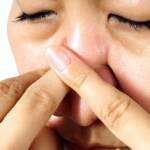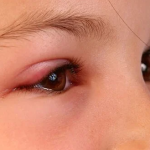Did you ever wonder what your tears are for? People produce tears even if they are not crying. In fact, the eyes have tears all the time to lubricate and moisturize the eyes, making the eyes comfortable. Tears contain oils, water, antibodies, and mucus that all come from special glands around the eye. What is ‘Dry Eye’ If your eyes don’t produce enough tears to lubricate your eyes, dry eye syndrome might be the culprit. In this post, you will learn more about this eye condition. You’ll also learn about dry eye management to reduce dry eye symptoms.
Dry eye overview
Dry eye syndrome is a condition that occurs when tears aren’t enough to lubricate the eyes. There are many reasons why this happens, even with the presence of tears. For instance, the tears produced are inadequate or have poor quality. Without enough moisture and lubrication, the eyes’ surface might become damaged and inflamed.
Your eyes sting or burn if you have dry eye syndrome. Some situations wherein a person might experience this condition include riding an airplane, being in an air-conditioned room, riding a bike, and staring at a computer screen for hours.
Symptoms
Watch out for the following symptoms if you suspect having dry eye syndrome:
- Your eyes feel like burning and stinging
- There’s a scratchy feeling, or it feels like something is in your eyes
- Vision becomes blurry, particularly when reading
- Your eyes are irritated or red, particularly when exposed to cigarette smoke or wind.
- There are mucus strings in or around the eyes
- Eyes have a lot of tears
- Wearing contact lenses is painful
It might sound weird that it causes the eyes to produce lots of tears, but it causes irritation which leads to the abnormal production of tears.
What causes this?
As people get older, the eyes produce fewer tears because of hormonal changes. This eye condition can affect both women and men. However, it’s more prevalent in women, particularly those who have gone through menopause.
Below are the common causes of dry eye syndrome:
- Blepharitis (when the eyelids are red or swollen)
- Rheumatoid arthritis, thyroid disease, Sjögren’s syndrome, and lupus
- Exposure to a very dry climate, smoke, and wind
- Undergoing LASIK and other refractive eye surgery
- Ectropion (when eyelids turn outward) and entropion (eyelids turn inward)
- Wearing contact lenses for an extended period
- Staring at a computer screen for a long period, and other activities that make you blink less, like reading
- Taking medicines like beta-blockers, diuretics, sleeping pills, antihistamines, etc.
Consult your ophthalmologist about all the medicines you consume.
Diagnosing dry eye syndrome
You’ll take an eye test to diagnose dry eye syndrome. Your ophthalmologist will check your eyelids and your eye’s surface. Also, they’ll check how you blink.
Diagnosing dry eyes can be done using different tests. The test you might undergo is the one that measures the thickness or quality of your tears. The ophthalmologist might also measure your speed of producing tears.
Conclusion
Dry eye syndrome might seem like a simple condition, but it’s not. Visit your eye doctor immediately before the symptoms become worse.
I believe in creativity and try to express the same with my words. I enjoy writing and keeping myself in touch with the books.






